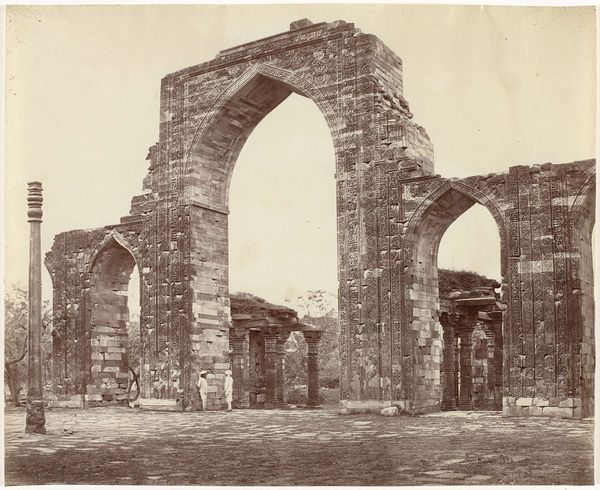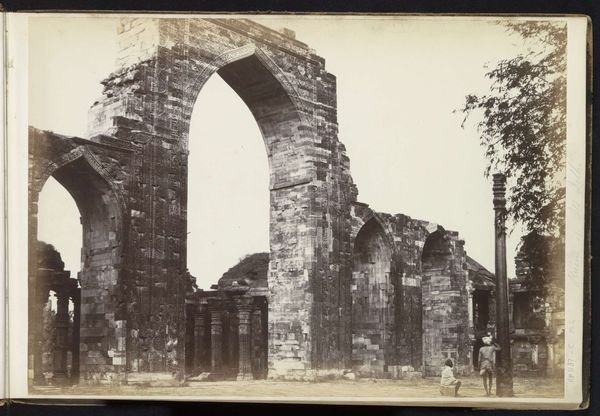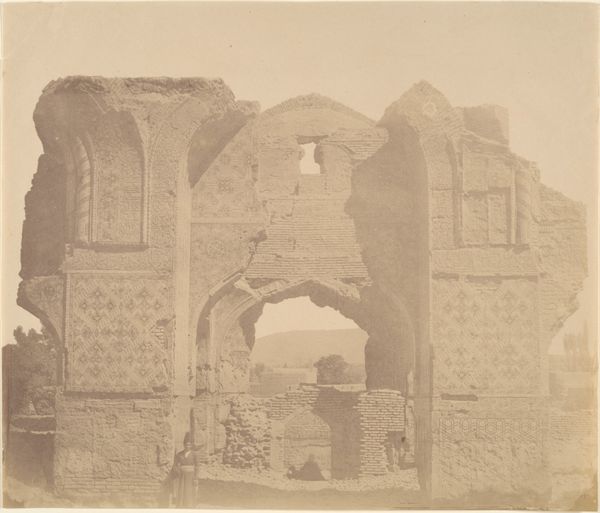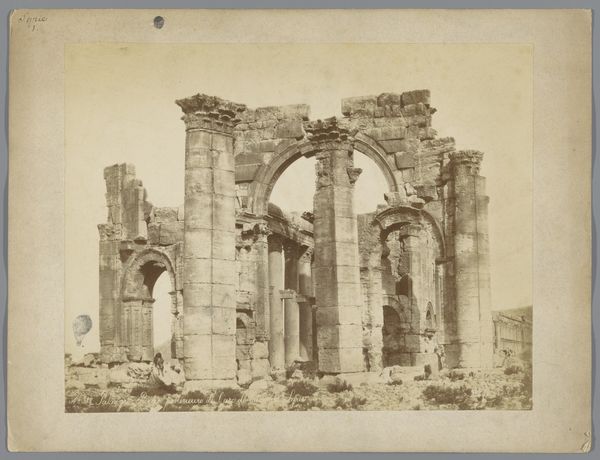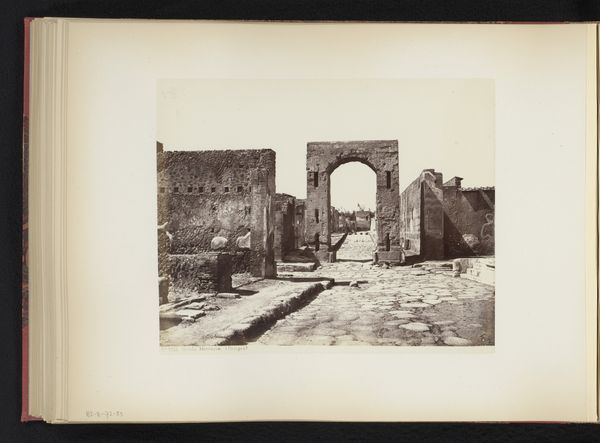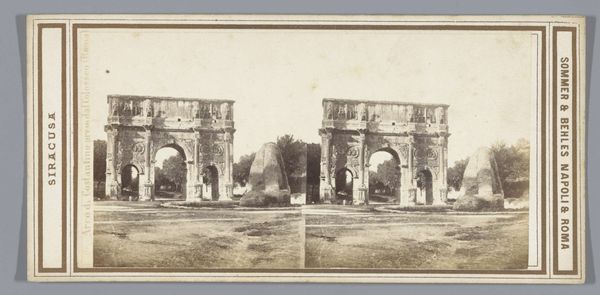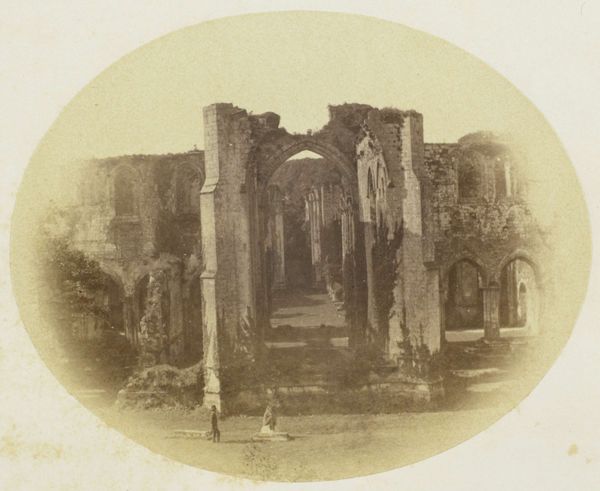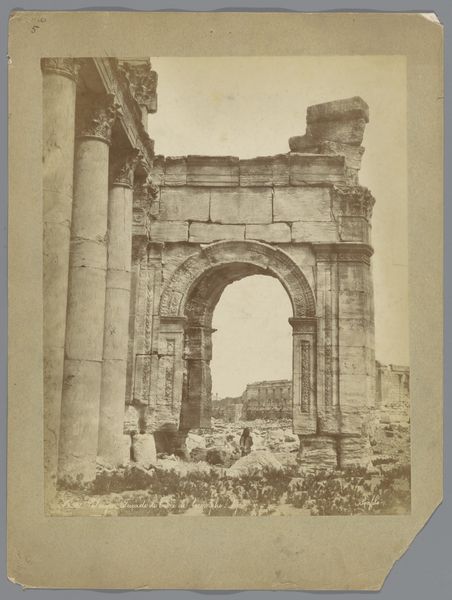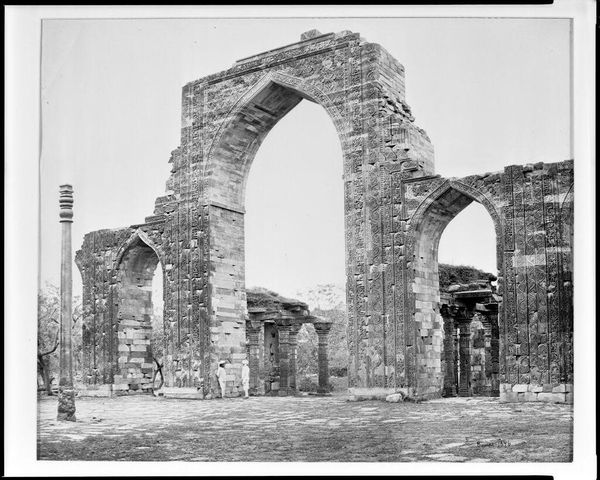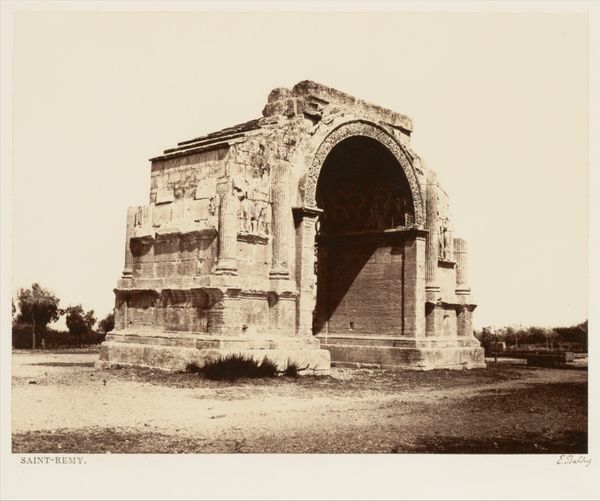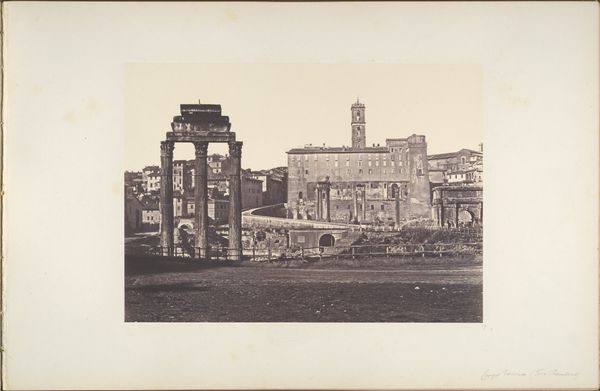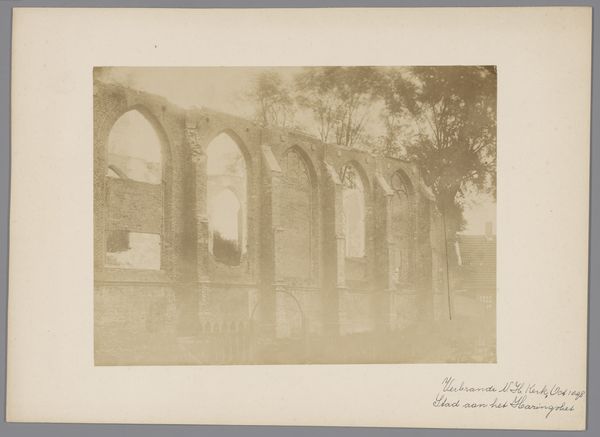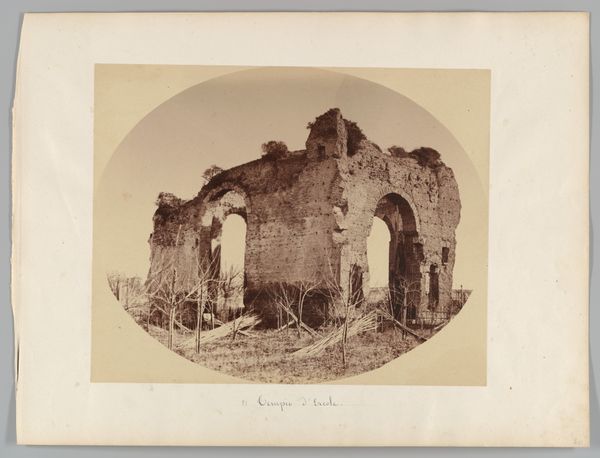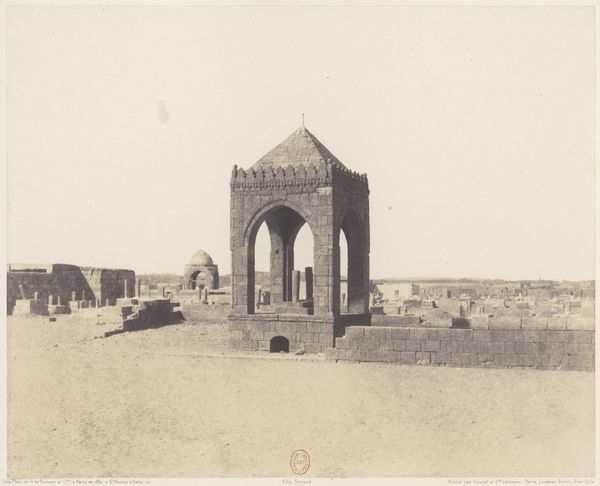
IJzeren Pilaar van Delhi en restanten van de Quwwat-ul-Islammoskee, Delhi 1862 - 1864
0:00
0:00
photography, architecture
#
sculpture
#
landscape
#
photography
#
ancient-mediterranean
#
19th century
#
islamic-art
#
history-painting
#
architecture
Dimensions: height 238 mm, width 303 mm, height 248 mm, width 318 mm
Copyright: Rijks Museum: Open Domain
Curator: What a picture, full of solemn grandeur! Editor: It certainly evokes a sense of time, doesn't it? This is a photograph titled "IJzeren Pilaar van Delhi en restanten van de Quwwat-ul-Islammoskee, Delhi" taken between 1862 and 1864 by Samuel Bourne. Look at the Iron Pillar itself—it’s just poking up to the side there! And behind it, the skeletal remains of that Quwwat-ul-Islam mosque. Curator: Mmm, but do you feel the weight of it? All those heavy carved stones arching upward… it speaks of ambition and time, of course, but more than that, of inevitable decay. The photographer frames everything so carefully, using the archways almost as… theatrical curtains. Editor: Ah, the layering. I notice particularly the formal structure of the ruined archways: Bourne utilizes strong verticals and horizontals—especially within the carved facades— to anchor the composition, lending a sense of monumentality, even in ruin. Note the almost imperceptible human figures placed centrally beneath the arch. These act as scaling devices, intensifying the sublime quality. Curator: It is about framing. I get the sense he saw, in that crumbling archway, not just ruin, but potential—a picture waiting to be painted with light. And that pillar, that unassuming Iron Pillar… I find myself wanting to know its story. A secret keeper in a city of ghosts. Editor: The Pillar’s placement to the left functions, formally, to halt what might otherwise be an uninhibited reading of recession. Its slender cylindrical form sets up a dynamic counterpoint to the ornate angularity of the architectural remains. We should say a few words regarding photography as a medium at the time. Curator: Absolutely, this wasn't casual, like snapping a selfie in front of the ruins. Imagine hauling that equipment around! You feel that patience, that commitment to craft in the stillness of the image, a captured breath from so long ago. He certainly immortalized the Pillar along with the decaying remains. I wonder, what will viewers looking at the photograph now take away? Editor: That depends, doesn’t it? Bourne delivers a composition carefully calculated to yield maximum aesthetic impact. Now, perhaps viewers will reflect on something quite other than my own concern for visual structure—the ravages of empire for instance. Curator: Or maybe they'll just feel, as I do, a shiver of connection to something immense and ancient, something beyond easy understanding. A history lesson you can feel in your bones, a history he invites us to write ourselves!
Comments
No comments
Be the first to comment and join the conversation on the ultimate creative platform.
